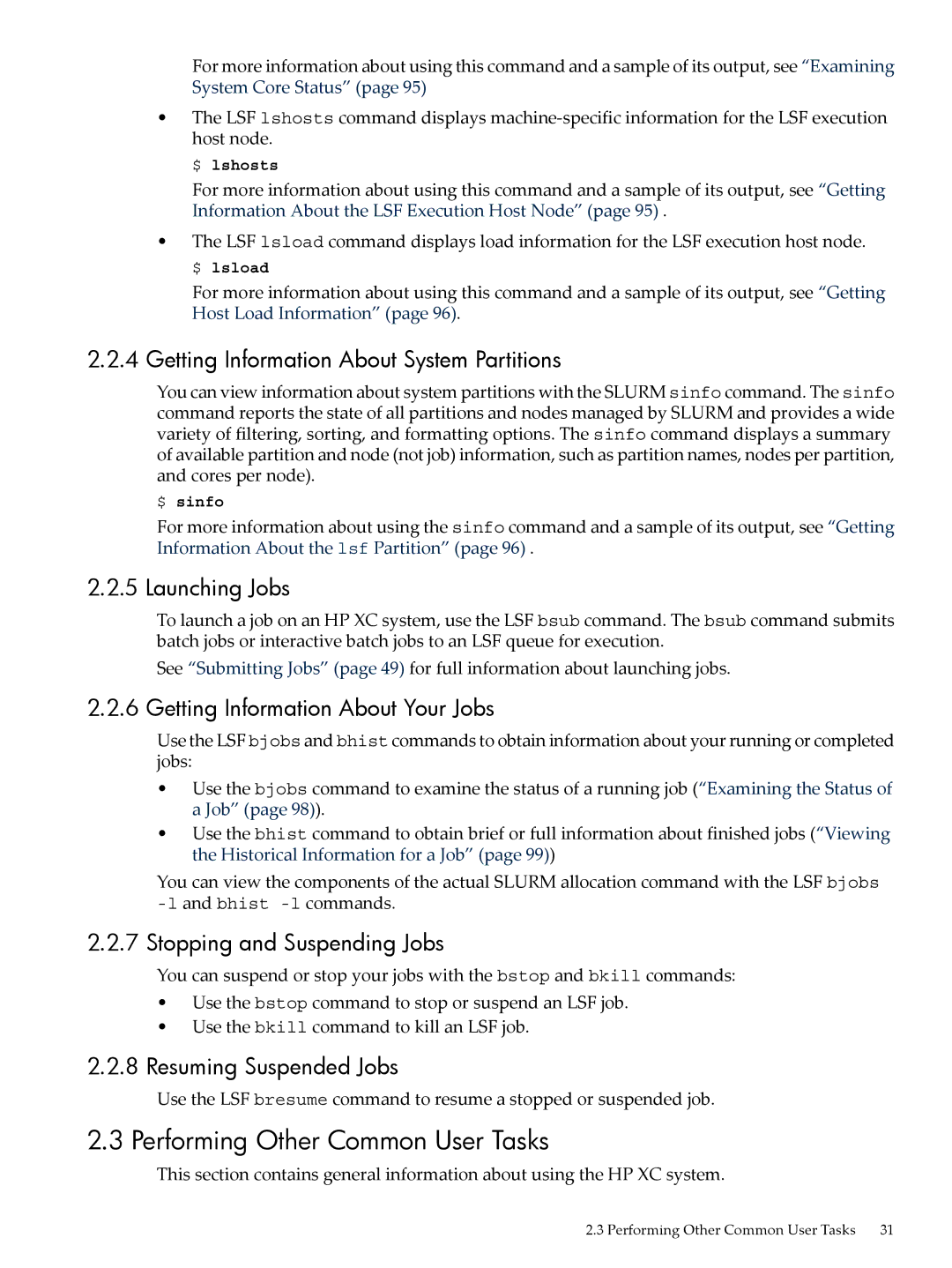For more information about using this command and a sample of its output, see “Examining System Core Status” (page 95)
•The LSF lshosts command displays
$ lshosts
For more information about using this command and a sample of its output, see “Getting Information About the LSF Execution Host Node” (page 95) .
•The LSF lsload command displays load information for the LSF execution host node. $ lsload
For more information about using this command and a sample of its output, see “Getting Host Load Information” (page 96).
2.2.4Getting Information About System Partitions
You can view information about system partitions with the SLURM sinfo command. The sinfo command reports the state of all partitions and nodes managed by SLURM and provides a wide variety of filtering, sorting, and formatting options. The sinfo command displays a summary of available partition and node (not job) information, such as partition names, nodes per partition, and cores per node).
$ sinfo
For more information about using the sinfo command and a sample of its output, see “Getting Information About the lsf Partition” (page 96) .
2.2.5 Launching Jobs
To launch a job on an HP XC system, use the LSF bsub command. The bsub command submits batch jobs or interactive batch jobs to an LSF queue for execution.
See “Submitting Jobs” (page 49) for full information about launching jobs.
2.2.6 Getting Information About Your Jobs
Use the LSF bjobs and bhist commands to obtain information about your running or completed jobs:
•Use the bjobs command to examine the status of a running job (“Examining the Status of a Job” (page 98)).
•Use the bhist command to obtain brief or full information about finished jobs (“Viewing the Historical Information for a Job” (page 99))
You can view the components of the actual SLURM allocation command with the LSF bjobs
2.2.7 Stopping and Suspending Jobs
You can suspend or stop your jobs with the bstop and bkill commands:
•Use the bstop command to stop or suspend an LSF job.
•Use the bkill command to kill an LSF job.
2.2.8Resuming Suspended Jobs
Use the LSF bresume command to resume a stopped or suspended job.
2.3 Performing Other Common User Tasks
This section contains general information about using the HP XC system.
2.3 Performing Other Common User Tasks 31
